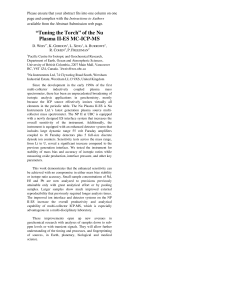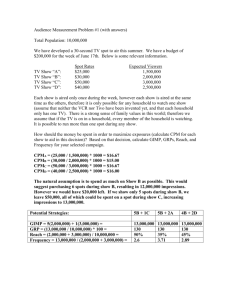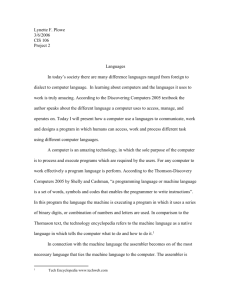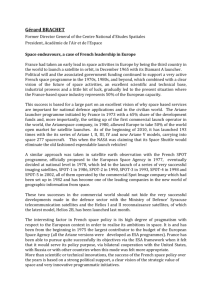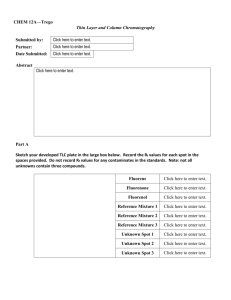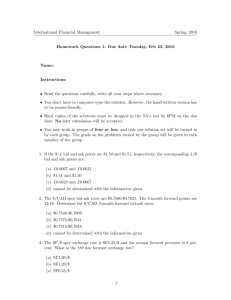“Tuning the Torch” of the Nu Plasma II-ES MC-ICP
advertisement
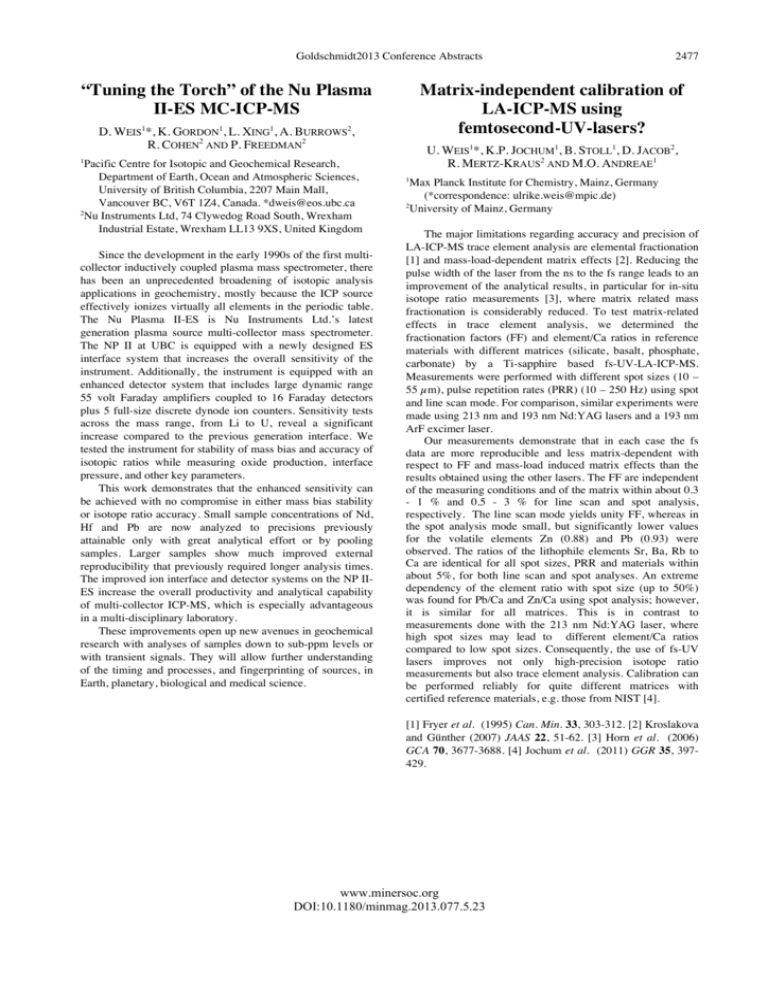
Goldschmidt2013 Conference Abstracts “Tuning the Torch” of the Nu Plasma II-ES MC-ICP-MS Matrix-independent calibration of LA-ICP-MS using femtosecond-UV-lasers? D. WEIS1*, K. GORDON1, L. XING1, A. BURROWS2, R. COHEN2 AND P. FREEDMAN2 Pacific Centre for Isotopic and Geochemical Research, Department of Earth, Ocean and Atmospheric Sciences, University of British Columbia, 2207 Main Mall, Vancouver BC, V6T 1Z4, Canada. *dweis@eos.ubc.ca 2 Nu Instruments Ltd,, 74 Clywedog Road South, ,Wrexham Industrial Estate, ,Wrexham LL13 9XS,, United Kingdom U. WEIS1*, K.P. JOCHUM1, B. STOLL1, D. JACOB2, R. MERTZ-KRAUS2 AND M.O. ANDREAE1 1 Since the development in the early 1990s of the first multicollector inductively coupled plasma mass spectrometer, there has been an unprecedented broadening of isotopic analysis applications in geochemistry, mostly because the ICP source effectively ionizes virtually all elements in the periodic table. The Nu Plasma II-ES is Nu Instruments Ltd.’s latest generation plasma source multi-collector mass spectrometer. The NP II at UBC is equipped with a newly designed ES interface system that increases the overall sensitivity of the instrument. Additionally, the instrument is equipped with an enhanced detector system that includes large dynamic range 55 volt Faraday amplifiers coupled to 16 Faraday detectors plus 5 full-size discrete dynode ion counters. Sensitivity tests across the mass range, from Li to U, reveal a significant increase compared to the previous generation interface. We tested the instrument for stability of mass bias and accuracy of isotopic ratios while measuring oxide production, interface pressure, and other key parameters. This work demonstrates that the enhanced sensitivity can be achieved with no compromise in either mass bias stability or isotope ratio accuracy. Small sample concentrations of Nd, Hf and Pb are now analyzed to precisions previously attainable only with great analytical effort or by pooling samples. Larger samples show much improved external reproducibility that previously required longer analysis times. The improved ion interface and detector systems on the NP IIES increase the overall productivity and analytical capability of multi-collector ICP-MS, which is especially advantageous in a multi-disciplinary laboratory. These improvements open up new avenues in geochemical research with analyses of samples down to sub-ppm levels or with transient signals. They will allow further understanding of the timing and processes, and fingerprinting of sources, in Earth, planetary, biological and medical science. 2477 Max Planck Institute for Chemistry, Mainz, Germany (*correspondence: ulrike.weis@mpic.de) 2 University of Mainz, Germany 1 The major limitations regarding accuracy and precision of LA-ICP-MS trace element analysis are elemental fractionation [1] and mass-load-dependent matrix effects [2]. Reducing the pulse width of the laser from the ns to the fs range leads to an improvement of the analytical results, in particular for in-situ isotope ratio measurements [3], where matrix related mass fractionation is considerably reduced. To test matrix-related effects in trace element analysis, we determined the fractionation factors (FF) and element/Ca ratios in reference materials with different matrices (silicate, basalt, phosphate, carbonate) by a Ti-sapphire based fs-UV-LA-ICP-MS. Measurements were performed with different spot sizes (10 – 55 µm), pulse repetition rates (PRR) (10 – 250 Hz) using spot and line scan mode. For comparison, similar experiments were made using 213 nm and 193 nm Nd:YAG lasers and a 193 nm ArF excimer laser. Our measurements demonstrate that in each case the fs data are more reproducible and less matrix-dependent with respect to FF and mass-load induced matrix effects than the results obtained using the other lasers. The FF are independent of the measuring conditions and of the matrix within about 0.3 - 1 % and 0.5 - 3 % for line scan and spot analysis, respectively. The line scan mode yields unity FF, whereas in the spot analysis mode small, but significantly lower values for the volatile elements Zn (0.88) and Pb (0.93) were observed. The ratios of the lithophile elements Sr, Ba, Rb to Ca are identical for all spot sizes, PRR and materials within about 5%, for both line scan and spot analyses. An extreme dependency of the element ratio with spot size (up to 50%) was found for Pb/Ca and Zn/Ca using spot analysis; however, it is similar for all matrices. This is in contrast to measurements done with the 213 nm Nd:YAG laser, where high spot sizes may lead to different element/Ca ratios compared to low spot sizes. Consequently, the use of fs-UV lasers improves not only high-precision isotope ratio measurements but also trace element analysis. Calibration can be performed reliably for quite different matrices with certified reference materials, e.g. those from NIST [4]. [1] Fryer et al. (1995) Can. Min. 33, 303-312. [2] Kroslakova and Günther (2007) JAAS 22, 51-62. [3] Horn et al. (2006) GCA 70, 3677-3688. [4] Jochum et al. (2011) GGR 35, 397429. www.minersoc.org DOI:10.1180/minmag.2013.077.5.23
